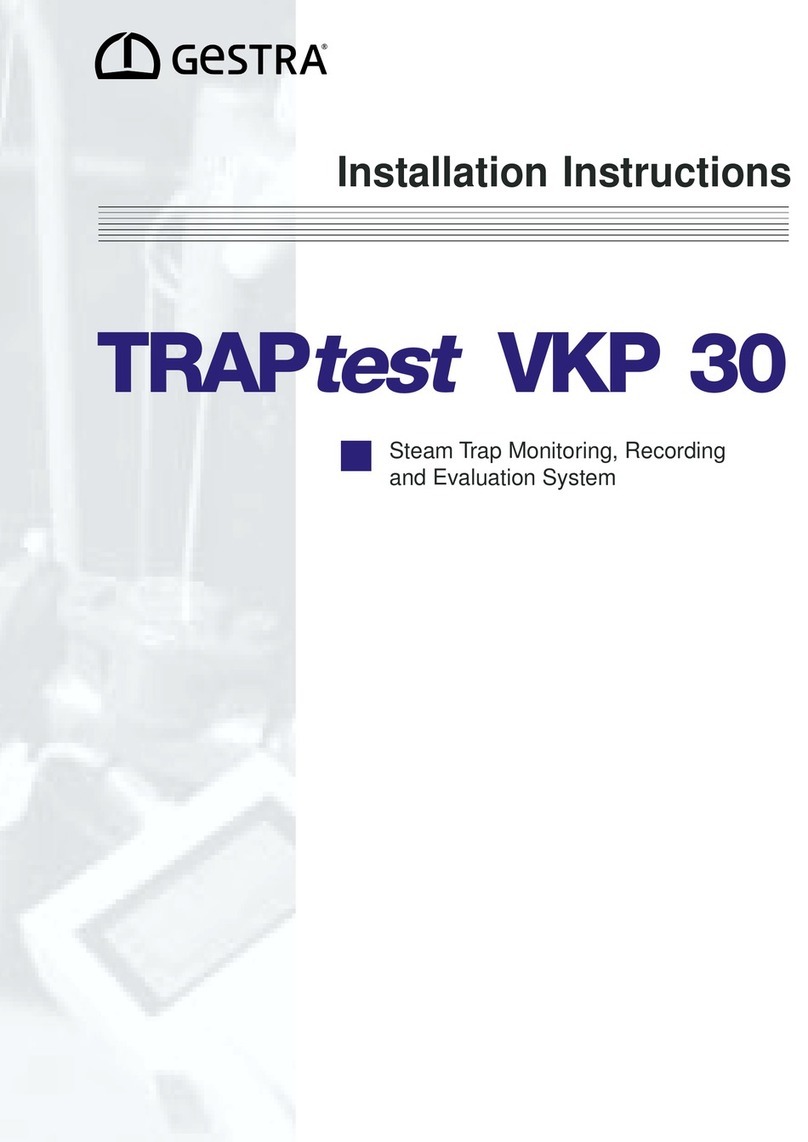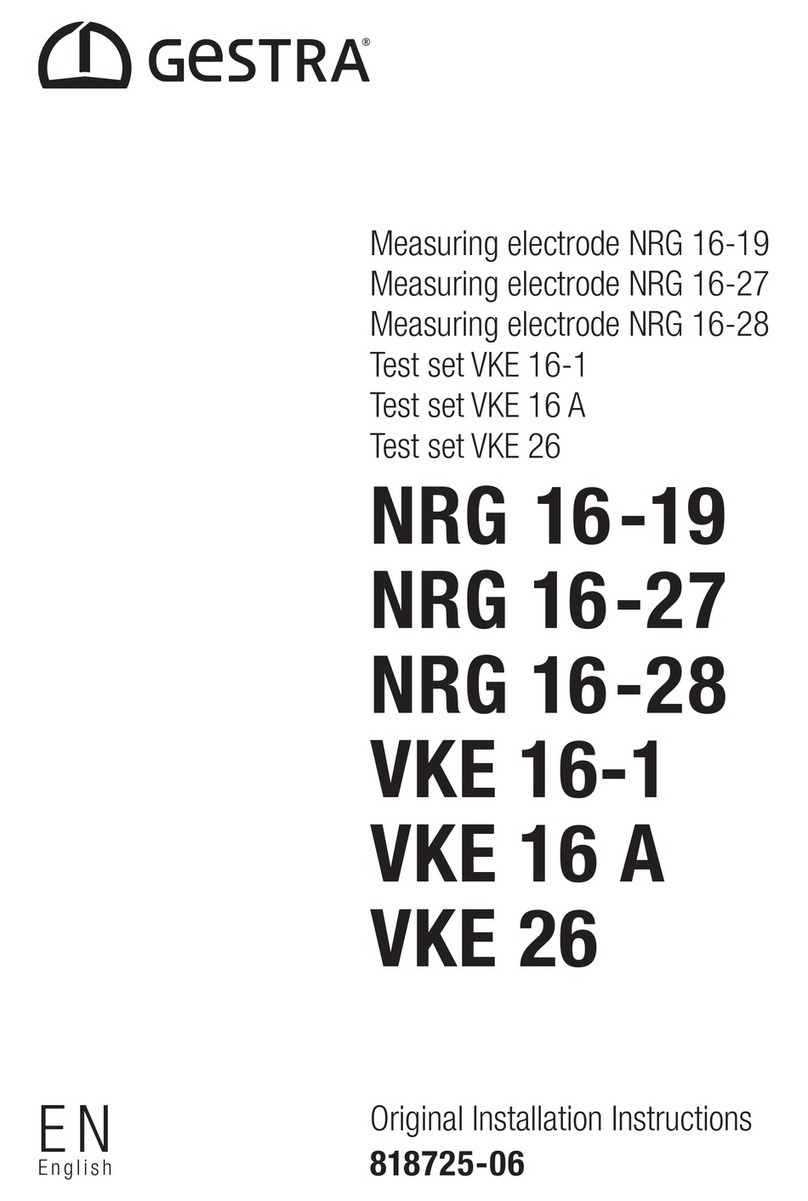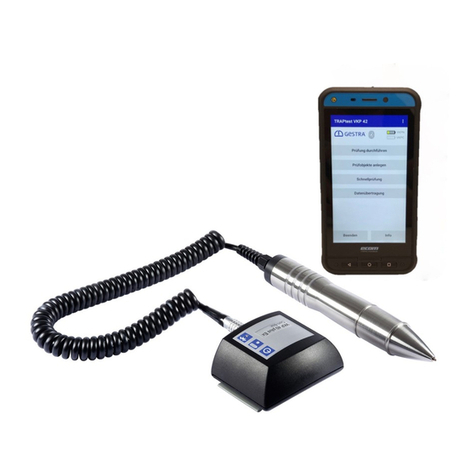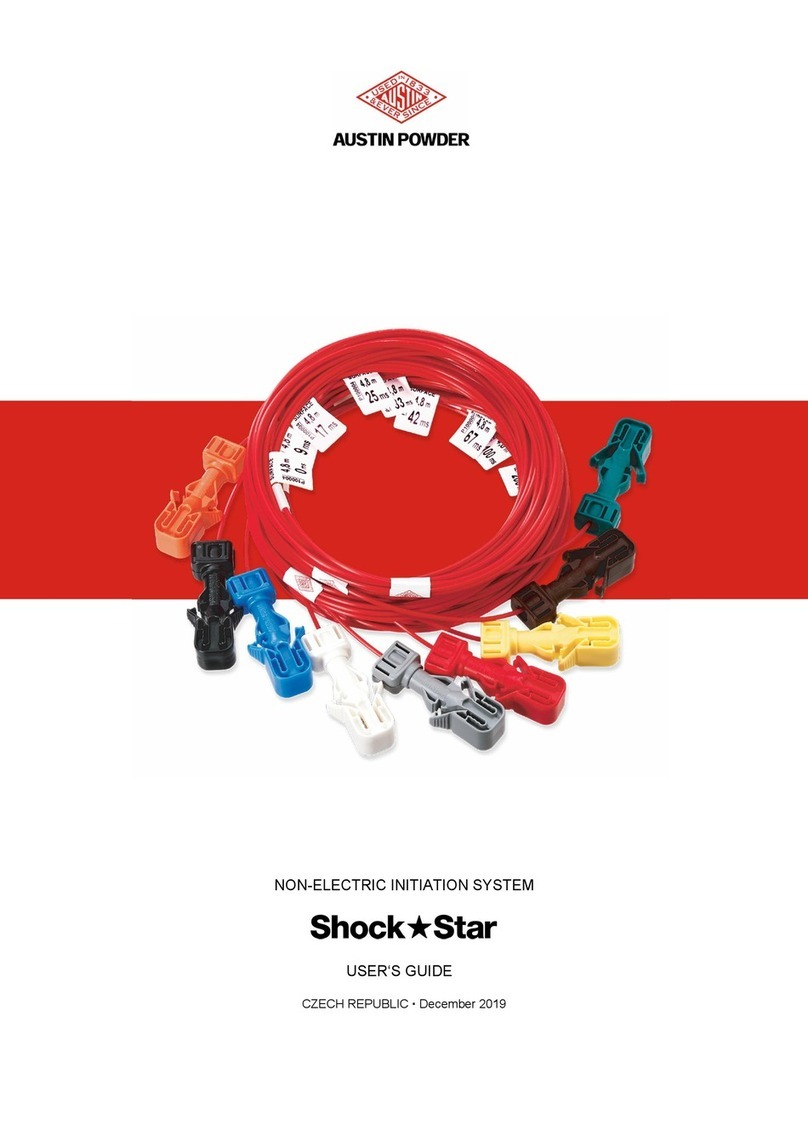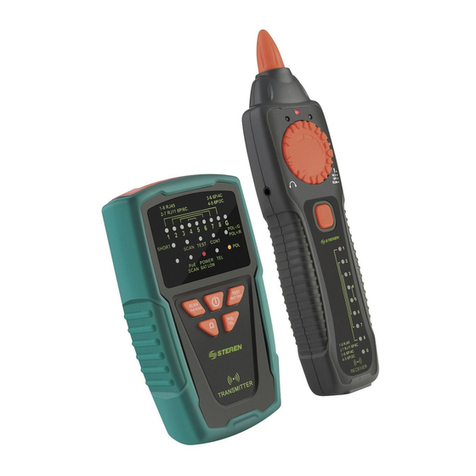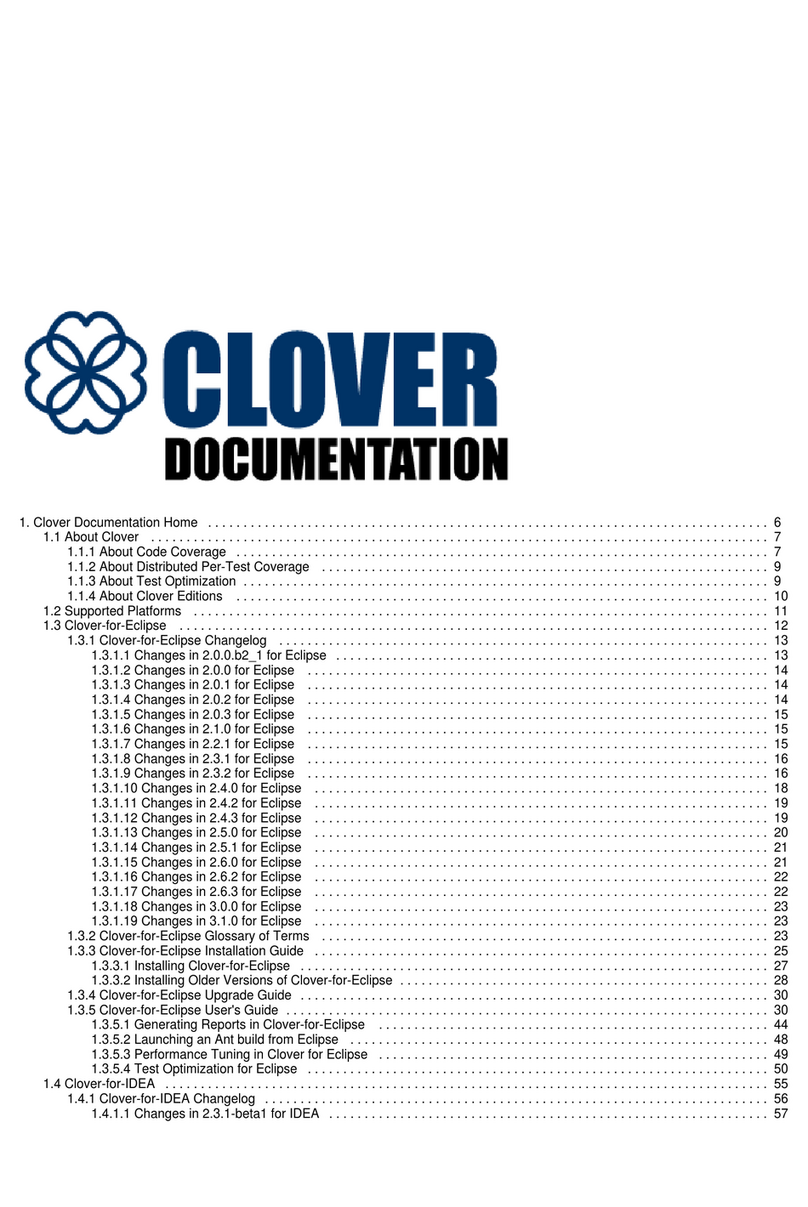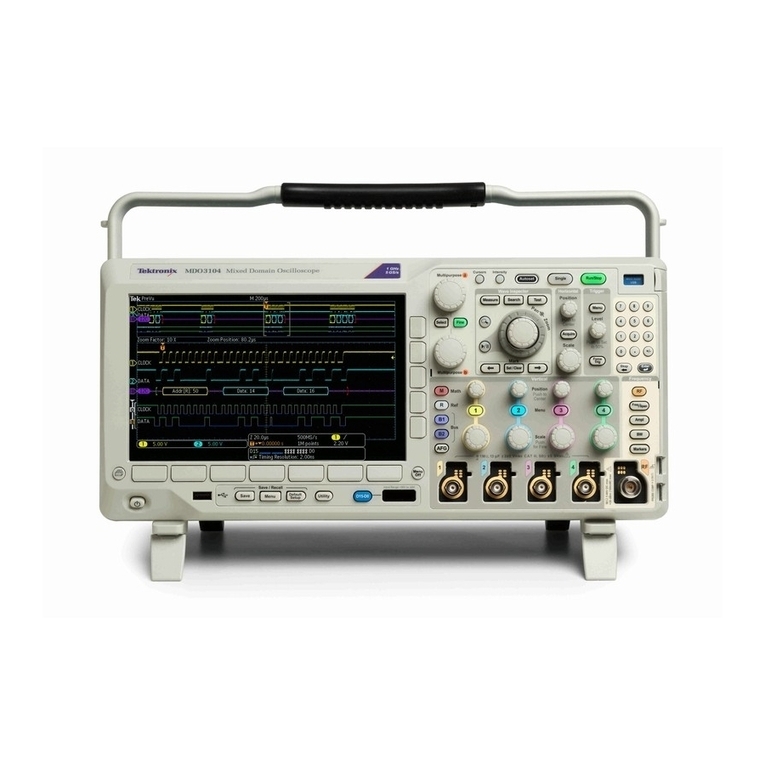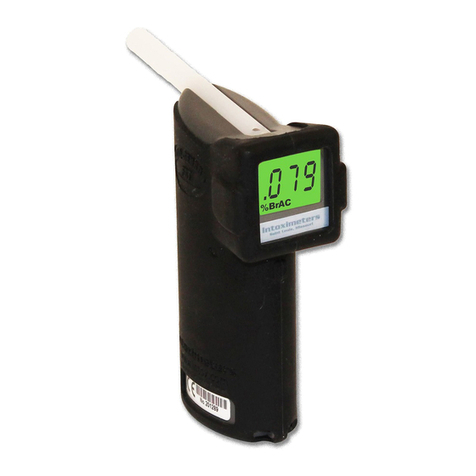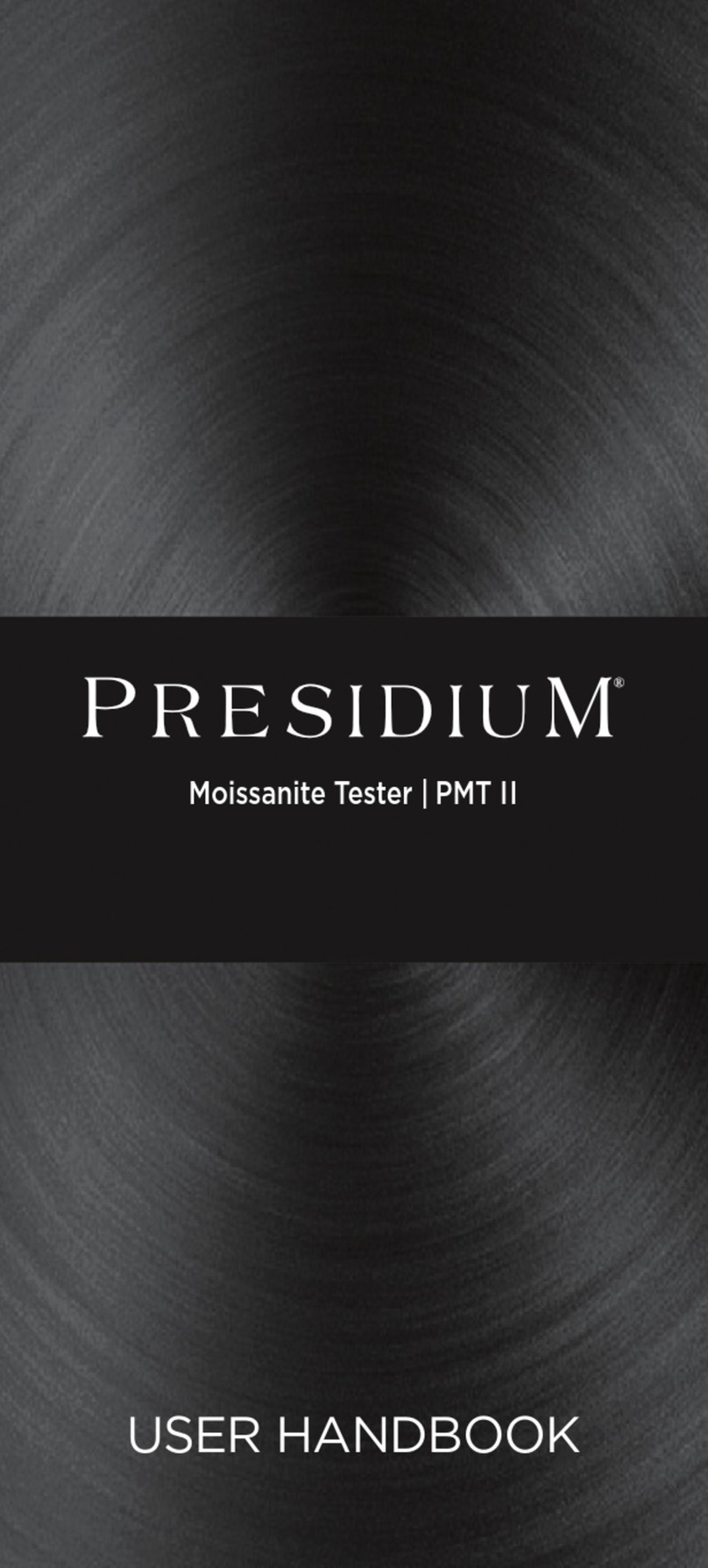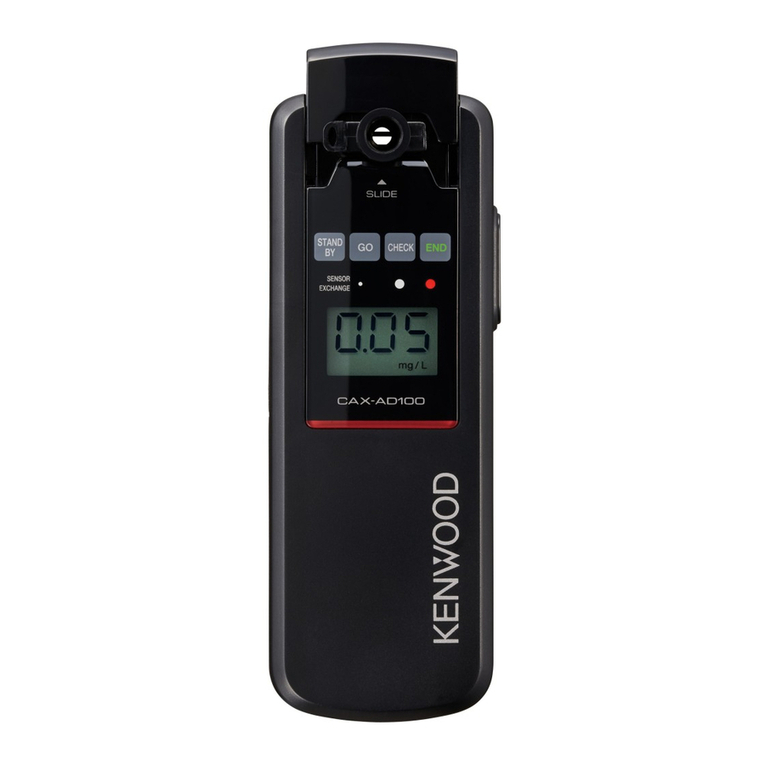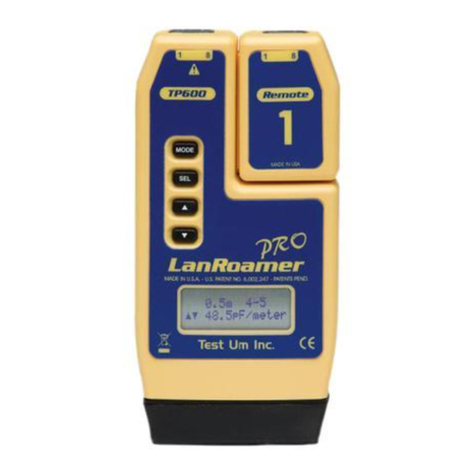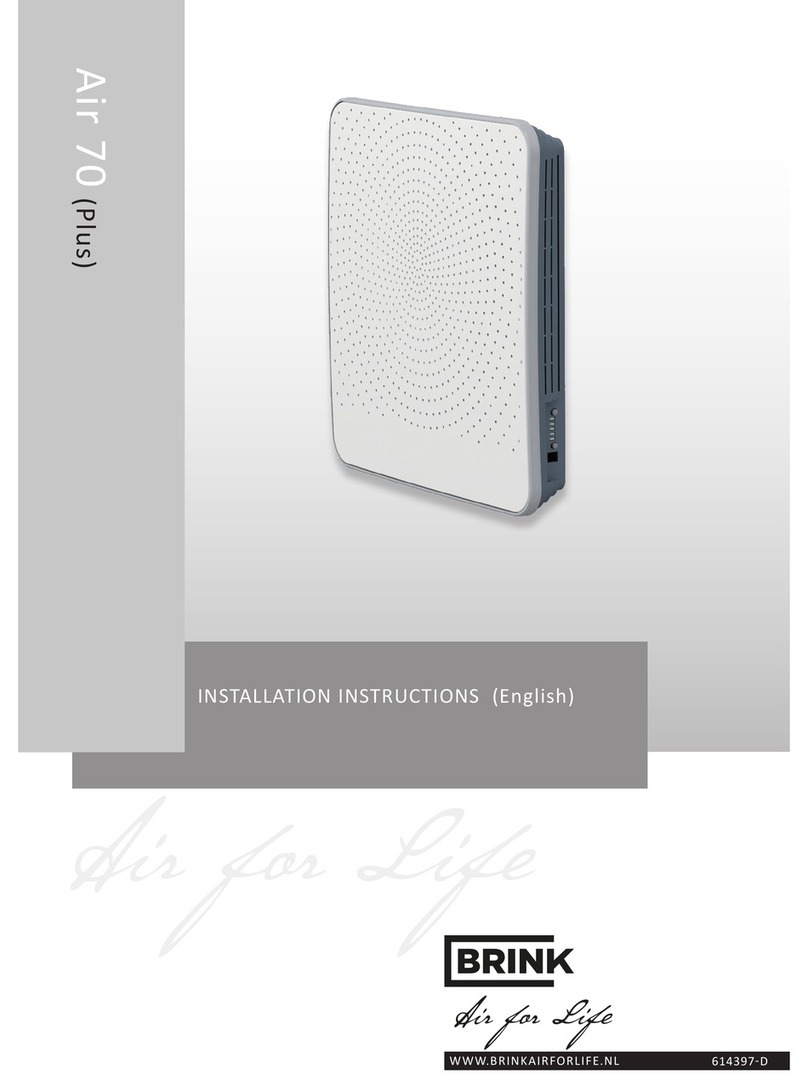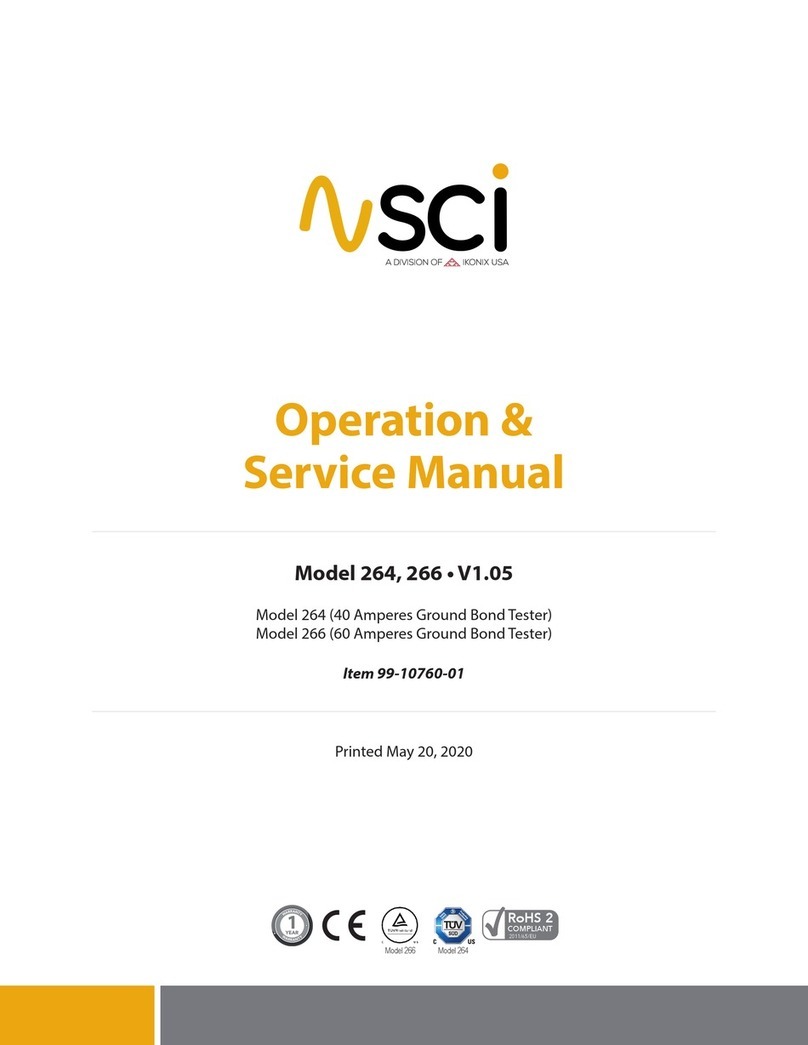GESTRA VKP 40plus Ex User manual

Test Equipment for Steam Traps
VKP 40plus Ex
VKP 40plus
Original Installation Instructions
819308-02

Contents
Foreword ............................................................................................................................................3
Availability.............................................................................................................................................3
Formatting features in the document ......................................................................................................3
Safety..................................................................................................................................................4
Use for the intended purpose .................................................................................................................4
Basic safety notes .................................................................................................................................4
Information on property damage or malfunctions .....................................................................................5
Qualification of personnel.......................................................................................................................5
Protective gear ......................................................................................................................................5
Typographic features of warning notes....................................................................................................6
Formatting features for warnings of property damage ..............................................................................6
Description .........................................................................................................................................6
Scope of supply and equipment specification ..........................................................................................6
Task and function................................................................................................................................11
Storing and transporting the equipment.........................................................................................12
Storing the equipment .........................................................................................................................12
Transporting the equipment .................................................................................................................12
Operation ..........................................................................................................................................12
Preparing tests....................................................................................................................................12
Performing tests..................................................................................................................................17
Evaluating the test results on a computer..............................................................................................27
After operation .................................................................................................................................28
Switching the equipment off.................................................................................................................28
Maintaining the equipment...................................................................................................................28
Servicing the equipment and installing spare parts ................................................................................31
Troubleshooting ...............................................................................................................................32
Putting the equipment out of operation ..........................................................................................33
Removing the equipment .....................................................................................................................33
Disposing of the equipment..................................................................................................................33
Technical data..................................................................................................................................34
Dimensions and weights ......................................................................................................................34
Pressure & temperature ratings............................................................................................................34
Manufacturer's declaration .............................................................................................................35

3
Foreword
This installation & operating manual will help you
use the steam trap test equipment safely and
efficiently for its intended purpose.
TRAPtest VKP 40plus Ex
TRAPtest VKP 40plus
This test equipment for steam traps will be
called equipment in this document.
This installation & operating manual is intended for
anyone commissioning, using, operating, servicing,
cleaning or disposing of this equipment and, in
particular, for professional after-sales service
technicians, qualified personnel and authorised and
trained staff.
All of these persons must read and understand the
content of this installation & operating manual.
Following the instructions given in this installation &
operating manual helps avoiding danger and
increases the reliability and service life of the
equipment. Please note that in addition to the
instructions given in this installation & operating
manual you must also observe all locally applicable
rules and regulations concerning the prevention of
accidents as well as approved safety guidelines for
good professional practice.
Observe and follow the instructions given in the
operating manual for the software program
VKP 40plus and the operating instructions issued by
the manufacturer of the data collector.
Availability
Keep this operating manual always in the hard case
for the equipment or the carrying bag. Make sure
that this installation & operating manual is available
to the operator.
The installation & operating manual is part of the
equipment. Please hand over this installation &
operating manual when selling the equipment or
passing it on.
Formatting features in the
document
Certain text elements of this installation & operating
manual feature a specific typographic design. You
can easily distinguish the following text elements:
Standard text
Cross-reference
Listing
Sub-items in listings
Steps for action.
Here you will find additional useful
information and tips serving to assist you
in using the equipment to its fullest
potential.

4
Safety
Use for the intended purpose
The test equipment VKP 40plus is designed for
checking steam traps for steam loss and
banking-up condensate. The test equipment for
steam traps VKP 40plus must NOT be used or
operated in explosion-risk areas.
The test equipment for steam traps VKP 40plus
Ex is designed for checking steam traps in gas-
explosion risk areas for steam loss and banking-
up of condensate.
Correct use includes compliance with the
instructions given in this installation & operating
manual, in particular obedience to all safety
instructions.
Correct use includes compliance with all
instructions given in the operating manual issued by
the manufacturer of the data collector and the
operating manual for the software program
VKP 40plus.
Any other use of the equipment is considered to be
improper.
The equipment is also considered to be used
improperly if:
equipment that is not explosion proof is used in
explosion-risk areas
untrained persons use the equipment
Basic safety notes
Explosion hazard
Meet the following requirements if you want
to use the equipment in gas-explosion risk areas:
For explosion-risk areas use only equipment
type VKP 40plus Ex together with the measuring
transducer type VKPS 40 Ex and the Com Box type
VKPC 40 plus Ex.
Make sure that all components of the
equipment are undamaged and in good
working order.
Never connect or disconnect the components
of the equipment in explosion-risk areas.
Never open the components of the
equipment in explosion-risk areas.
Do not recharge the batteries of the
individual components of the equipment in
explosion-risk areas.
Risk of explosion if the pipeline to be tested is
carrying voltage.
Before starting the test make sure that no part
of the pipeline is carrying voltage, e. g. by
earthing the pipeline.
Risk of explosion if a wrong USB power cable is
used. Using a wrong USB power cable for
recharging can damage component parts or the
storage battery of the equipment. Note that in
this case the equipment is no longer explosion
proof.
Use only the supplied USB power cable type
VKPA 40 plus for recharging the Com Box type
VKPC 40 plus Ex.
Risk of explosion due to spark-over.
Do not use any items in the explosion-risk area
that could generate sparks. Do not use the
supplied file!
Risk of severe injuries
Risk of deadly electric shocks if a test is
performed on live steam traps!
Make sure that the traps to be tested are not live.
The trap to be tested is hot and under pressure.
Before carrying out any tests make sure that the
following requirements are met:
Make sure there is no skin contact with the
trap to the tested or other parts of the
installation.

5
Always wear protective gear when
performing the tests.
Make sure that there are no fluid leaks at the
area of the trap to be tested.
Risk of deadly electric shocks if defective
components are used!
Never open the components of the
equipment.
Never use any defective or damaged
components.
Before recharging the equipment make sure
that the used cables are in good working
condition.
Information on property damage
or malfunctions
Condensation may have formed in the
equipment in the event of sudden or drastic
temperature changes.
After temperature changes leave the
equipment switched off until the temperature
of the equipment reaches ambient
temperature.
Allow any condensation on the equipment to
dry out completely.
Static charges may cause damage to electronic
components and/or lead to malfunctions.
Wear electrically insulated shoes when
performing tests.
Improper handling may cause damage to
electronic components and/or lead to
malfunctions.
Never open the components of the equipment.
If the measuring probe does not touch the trap
firmly at the right position and angle the
readings may be incorrect.
Make sure the sensor tip of the measuring
probe touches only a bare metallic surface.
If the tests are performed on different points on
a steam trap the readings may be faulty.
Make sure the sensor tip touches always the
same test point. Make sure the sensor tip is
perpendicular to the surface of the steam trap
when it touches the test point.
Qualification of personnel
A qualified person must be acquainted with and
experienced in the following:
The pertinent on-site rules and regulations for
preventing fire and explosions as well as
industrial safety regulations
Working on pressure equipment
Working with dangerous (hot or pressurized)
fluids
Observing all notes and instructions in this
installation & operating manual and the
applicable documents
Working with personal computers (PCs)
Working with menu-driven software
Analysing and interpreting steam trap test
results
Protective gear
The required protective gear depends on the types
of fluid used and the regulations on site. For more
information on suitable safety clothing and safety
gear refer to the safety data sheet of the fluid in
question.
Protective gear comprises the following items:
protective helmet
work boots
industrial leather gloves
Depending on local rules and regulations and the
noise level generated by the plant some form of ear
protection to EN 352 must be worn.
Depending on local rules and regulations and the
fluid used in the plant some form of eye protection
to EN 166 must be worn.

6
Typographic features of warning
notes Description
DANGER
Notes with the heading DANGER warn
against imminent dangerous situations that
can lead to death or serious injuries.
Scope of supply and equipment
specification
Scope of supply
All individual equipment components are in the hard
case. Before you can use the equipment connect
the components and charge the batteries.
WARNING
Notes with the heading WARNING warn
against possibly dangerous situations that
could lead to death or serious injuries.
The following items are part of the supply:
Transportation case (hard case)
Carrying bag (Note that only the bag with stock
code no. 393081 is suitable for use in gas-
explosion risk areas.)
Strap to fix the Com Box type VKPC 40plus Ex
CAUTION
Notes with the heading CAUTION warn
against dangerous situations that could
lead to minor or moderate injuries.
Data collector with accessories (see operating
manual issued by the manufacturer):
Power supply unit for data collector
(VKP 40plus)
Docking station for data collector
(VKP 40plus Ex)
Formatting features for warnings
of property damage Measuring probe with connecting cable
Com Box type VKPC 40plus Ex
USB power cable type VKPA 40 plus for Com Box type
VKPC 40plus Ex
Attention!
This information warns of a situation
leading to property damage. Power supply unit for Com Box
Four adapters for power supply unit for different
types of mains sockets
DVD with VKP 40plus program software for
evaluating the test results on a PC
Adjustable mirror
Identification tags for steam traps (optional)
A file is also supplied with the equipment. Do not
use this file in explosion risk areas! An appropriate
warning note is stuck to the file.
The data collector, Com Box type VKPC 40plus Ex
and the measuring transducer type VKPS 40 Ex of
the VKP 40plus Ex equipment are all gas-explosion
proof. These components bear additional markings
on the name plates.

Equipment specification
VKP 40plus Ex
F3
F8
F4
F9
F5
F10
F2
F7
F1
F6
2
ABC
3
DEF
1
Caps
5
JKL
6
MNO
4
GHI
8
TUV
9
WXYZ
7
PQRS
0
Space
#
*
+
-
.
E
N
T
E
R
E
S
ok
C
R
R
?
I
1
2
3
4
5
6
Item
no.
Name / specification
1 Data collector type VKPN 40plus Ex (see
operating manual issued by the
manufacturer)
2 Com Box type VKPC 40plus Ex
3 Connecting cable to connect the
measuring probe with the Com Box
(firmly attached to the measuring probe)
Item
no.
Name / specification
4 Red LED (illuminated during a test)
5 Measuring transducer type VKPS 40Ex
6 Sensor tip
7

VKP 40plus
7
4
8
5
2
#
9
6
Fn End
3
1
0
Send
OK
1
2
3
4
5
6
Item
no.
Name / specification
1 Data collector type VKPN 40plus (see
operating manual issued by the
manufacturer)
2 Com Box type VKPC 40plus
3 Connecting cable to connect the
measuring probe with the Com Box
(firmly attached to the measuring probe)
Item
no.
Name / specification
4 Red LED (illuminated during a test)
5 Measuring transducer type VKPS 40Ex
6Sensortip
8

Indicators and adjustors on the Com box
7
8
9
Item
no.
Description
7 Button ON/OFF
8 State of charge indicator
LED illuminated green: the battery of the Com Box is charged. The Com Box is not connected to
the mains power.
LED pulsing green: the Com Box is connected to the mains power and the battery is being
charged.
LED illuminated amber: the charge of the battery of the Com Box is low. Please recharge the
battery at the next opportunity.
LED illuminated red: the charge of the battery of the Com Box is too low. Recharge the battery.
If the LED is not illuminated the storage battery of the Com Box is fully charged. Disconnect the
Com Box from the mains power.
9 State indicator for Bluetooth connection
LED illuminated blue: Bluetooth connection established to the data collector.
LED pulsing blue: the Bluetooth connection to the data collector is being established or data are
being transferred.
There is no Bluetooth connection to the data collector if the LED is not illuminated.
9

10
Name plate
The individual components are provided with name
plates.
Data collector:
Name plate on back of the device
Name plate for explosion proof equipment
(VKP 40plus Ex) on both sides. The name
plate also states the ATEX certification
number.
Com Box: Name plate on the back, behind the
strap
USB power cable for Com Box: Lasered onto the
probe body
Measuring probe: Lasered onto the probe body
The name plates contain the following indications:
Manufacturer
Type designation
Serial number
Admissible range of service temperature
ATEX
The VKP 40plus Ex is approved for use in explosion-
risk areas. For more information on the data
collector for VKP 40plus Ex see the operating
manual for the data collector.
The following components are approved for application
in explosion-risk area:
data collector withEx marking
measuring transducer type VKPS 40 Ex with
Ex marking
Com box type VKPC 40plus Ex with Ex marking
carrying bag (stock code no. 393081)
Do not use the supplied file in explosion-risk areas!
An appropriate warning note is stuck to the file.
Please observe the following notes if the
equipment is to be used in explosion-risk areas:
The equipment can be used in zones
(surrounding atmosphere acc. to Directive
1999/92/EC) 1 and 2 (ATEX Directive 94/9/EC).
The data collector bears the following markings:
Europe: II 2G ia IIC T4 Gb IP64
For more information on the markings on the data
collector see the operating manual for the data
collector.
The Com Box bears the following marking:
VKPC 40plus Ex
II 2G Ex ib IIC T4 Gb
Connect only measuring transducers type VKPS 40 Ex marked
Ex ib IIC T4 Gb to the Com Box type VKPC 40plus Ex.
The measuring transducer bears the following
marking:
VKPS 40Ex
Ex ib IIC T4 Gb

Task and function
Purpose
The test equipment VKP 40plus is designed for
checking steam traps for steam loss and banking-
up condensate.
The test equipment VKP 40plus Ex is designed for
checking steam traps in explosion-risk areas for
steam loss and banking-up of condensate.
To perform the test you have the following test
options:
Test jobs prepared on the computer: all test
objects that are part of the test job are shown.
Test measurement: A test job is created during
the test.
During the test procedure the surface temperature
of the tested steam trap is also measured, which
makes it possible to detect steam traps that cause
banking-up of condensate. In order to do so you
have to enter the design service pressure of the test
object on the upstream side. The boiling point
associated with this service pressure is then
compared with the temperature reading. If the
measured temperature is 40 % below the set point,
the steam trap is waterlogged and banking up
condensate.
If the test results are affected by noise produced by
other components of the plant you can perform a
foreign noise measurement. This will help you to
test and evaluate the influence of foreign noise on
the test results.
The test objects are selected and the test results
evaluated on the computer. The necessary software
program is part of the scope of supply. For more
information on the program refer to the supplied
software operating manual.
Function
Ultrasonic vibrations are generated when fluid flows
through a steam trap. These ultrasonic vibrations
are sensed by pressing the sensor tip of the hand-
held measuring probe onto the test point of the
steam trap. A thermocouple integrated in the
measuring probe measures the temperature
simultaneously.
The measuring probe then translates the readings
into digital signals. These signals are then
transferred to the Com Box via the firmly attached
cable. The Com Box then transfers the readings to
the data collector via Bluetooth. The data collector
records the data and displays the readings visually.
To operate the GESTRA program you do
not need the keypad of the data collector.
All necessary inputs can be made using
the touch screen display of the data
collector.
The data collector for explosion-risk areas can be
connected to a computer via the supplied docking
station.
The data collector that is not explosion proof can be
connected to a computer via USB port.
The test readings can then be transferred to a data
base on the computer.
The evaluation of the test results is based on limit
sound values (LV). These reference sound values
have been ascertained empirically by the
manufacturer.
A steam trap does not leak steam if all the following
requirements are met:
at least one of the readings is below the
threshold value (TV) and
the measured temperature is 40 % above the
set point
A steam trap is also functioning correctly if all the
following requirements are met:
some readings are above the threshold value
and
the mean value of all readings of the test does
not reach the limit sound value
If this is not the case the steam trap is either faulty
or the test was affected by foreign noise. To detect
any foreign noises you should perform a foreign
noise measurement. In this case after the test you
will be asked to do so by the menu of the data
collector.
For thermodynamic steam traps a certain limit
frequency of operations is used to evaluate its
performance.
11

If you did not enter the service pressure,
the equipment will only check whether the
temperature exceeds 40 °C. In this case
banking-up of condensate will not be
indicated.
For more information on how the readings are
evaluated and interpreted see the operating
instructions for the GESTRA software program for
VKP 40plus.
12
Storing and transporting the
equipment
Use only the supplied hard case for storing the
equipment.
If you do not use the equipment recharge the
data collector and the Com box at least every six
months.
Storing the equipment
Please observe the following items when storing
the equipment:
Do not store the equipment for more than 12
months.
All connections and openings on the equipment
must be closed.
Protect the equipment and all components
against hard shocks and impacts.
Store the equipment only indoors.
The requirements specified under "Technical
Data" on page 34 must be observed.
Make sure that all these requirements are
always met when storing the equipment.
Please contact the manufacturer if you cannot
comply with the recommended storage
conditions.
Transporting the equipment
Meet the requirements for storage also when
transporting the equipment.
When transporting the equipment make sure
that you meet the requirements specified in the
section "Technical Data" on page 34.
Use only the supplied hard case for transporting
the equipment outside explosion-risk areas.
When transporting the equipment on site make
sure that it is not damaged by mechanical
shocks and cannot fall down.
The equipment must be connected and inside
the carrying bag if you want to transport the
equipment in explosion-risk areas.
Operation
Preparing tests
Recharging the batteries of the components
DANGER
Sparks generated when charging the
equipment can cause an explosion.
Recharge the batteries of the Com box
and the data collector only outside the
explosion-risk area.
DANGER
Risk of explosion if a wrong USB power
cable is used.
Use only the supplied USB power
cable for recharging the battery of the
Com Box type VKPC 40plus Ex.
If another USB power cable is used parts of the
Com Box may be damaged. In this case the
equipment is no longer explosion proof.
The correct USB power cable and the connection
for the USB power cable on the Com Box are
marked with the stock code number 393081 of the
USB power cable.

Attention!
If the equipment is used after sudden
and/or drastic temperature changes
condensation may form in the equipment.
This can lead to malfunctions or damage.
After temperature changes leave the
equipment switched off until the
temperature of the equipment reaches
ambient temperature.
Do not recharge the equipment during
this time.
13
Attention!
Risk of data loss if the equipment is not
fully charged.
Before using the equipment make
sure all components are fully charged.
Recharge the equipment as soon as
possible if the state-of-charge
indicator on the display is yellow.
Recharge the equipment immediately
if the state-of-charge indicator on the
display is red.
Before using the equipment for the first time you
have to charge the batteries in the Com box and in
the data collector.
Charge the battery of the Com box as described
on page 29.
Charge the battery of the data collector as
described in the operating manual for the data
collector.
If the temperature of the battery is too high
or too low the charging process of the data
collector and the Com Box is stopped
automatically to prevent the batteries from
overloading.
The max. temperature is 35 °C (95 °F),
the min. temperature 0 °C (32 °F).
The charging process will continue
automatically as soon as the temperature
of the battery is again within the
admissible temperature limits.

Connecting components
Take the equipment out of the transport
packaging.
14
Check the equipment for transport damage.
Contact the manufacturer if you detect any kind
of shipping damage.
DANGER
Sparks generated when connecting the
equipment can cause an explosion.
Connect the Com box and the
measuring probe always outside the
explosion-risk area!
To connect the Com box with the data collector
proceed as follows:
Align the marking on the plug (11) with the
marking on the jack (10).
Insert the plug into the jack until it hits a stop.
10
11
The back of the Com box is provided with
belt straps. If you do not want to carry the
Com box during the test procedure you
can attach it to your belt or to the supplied
strap.
To establish a data link between the Com box and
the data collector switch the two components on as
described in the following section:
Switching components on and off
Attention!
If the equipment is used after sudden
and/or drastic temperature changes
condensation may form in the equipment.
This can lead to malfunctions or damage.
After temperature changes leave the
equipment switched off until the
temperature of the equipment reaches
ambient temperature.
Do not recharge the equipment during
this time.
To switch the Com Box on press the ON/OFF
button (7).
The LEDs (8, 9) on the Com Box light up briefly.
For more information see page 18.
To switch the Com Box off press the button
ON/OFF (7) and hold it down for three seconds.
The measuring probe is switched on as soon as it is
connected to the Com Box and the Com Box is
switched on.
7
8
9
To switch the data collector off follow the
instructions given in the operating manual of the
data collector.
After switching the data collector on again from
energy-saving standby mode the software program
VKP 40plus starts automatically if it had been
activated previously.
To exit the GESTRA program on the data
collector, tap the button "Exit".

To continue using the GESTRA program tap the
button "No".
To confirm that you want to exit the program tap
the button "Yes".
Data that have not been saved are stored in the
flash file system of the data collector and the
GESTRA program is closed.
Setting up the data collector
You can customize various settings of the GESTRA
program on the data collector according to your
needs.
Attention!
An incorrect setting can impair the proper
functioning of the equipment.
Change only the settings described in
the following.
Contact the manufacturer if you want
to change any other settings.
15
You can change the following settings:
the language of the menu of the GESTRA
program on the data collector
the Bluetooth connection between the data
collector and a Com Box
To change the language proceed as follows:
Switch on the data collector.
To open the main menu tap the button
"Continue".
Tap the button "Language".
A list of all available languages appears.
Tap button "Page up" or "Page down" until the
desired language is shown.
To select a language tap on the respective item.
To confirm you selection and show the menu in
the desired language tap the button "Continue".
The menu is shown in the selected language.
To return to the main menu without accepting
the new setting tap button "ESC".
The menu remains in the previous language.
To establish a Bluetooth connection (via pairing) for
data transfer between the data collector and a Com
Box proceed as follows:
Switch on the Com Box.
Switch on the data collector.
Make sure that the Bluetooth connection to the
data collector is active.
To open the main menu tap the button
"Continue".
Tap the button "Bluetooth".
The submenu "Com Box pairing" opens.
To find Bluetooth sources in the signal reception
area tap the button "Continue".
The display states "Looking for Com Boxes ...". The
data collector searches for Bluetooth sources at the
reception area. At the same time any existing
pairing with a Com Box will be deleted.
Once the search routine is finished, up to ten Com
Boxes ready for pairing will be indicated as buttons
specifying the respective name of the equipment.
The name of the equipment is "VKP40plus_xxxxxx“.
The serial number "xxxxxx" corresponds to the
number indicated on the name plate of the Com
Box. Any other devices sending Bluetooth signals
will not be shown.
To pair the equipment with the desired Com Box
tap the respective button.
The two devices are being paired. The display
states "Pairing mit VKP40plus_xxxxxx“ ". After the
pairing is complete the display states the message
"Successfully paired with VKP40plus_xxxxxx".
Tap the button "Continue".
Should an error occur during the pairing routine, the
message "Error during pairing" is shown.
In this case repeat the pairing process.
If the error message pops up again try to pair
the equipment with another Com Box.
If the equipment can be paired with another Com
Box, the Com Box is faulty. If the equipment cannot
be paired, the data collector is faulty.
In this case please contact the manufacturer.

Installing the program on a PC
To create test objects and analyse measurements,
you must install the supplied software on your
computer.
To install the software on a computer, the following
system requirements must be satisfied, as a
minimum:
Microsoft Windows®7 or Windows®Vista
operating system
SQL server®2008 Express
Microsoft Windows®Mobile Device Center
1 GB free hard drive
Min. 1 GB RAM
Attention!
Data from older program versions may be
lost when a new version is installed.
Back up all existing data before
installation.
16
Back up all data from older program versions
that you do not want to delete.
Close all other applications on your computer.
To install the software on your computer you must
have full administrator rights.
Insert the supplied DVD into your computer's
DVD drive.
The installation program should start automatically.
If the autostart function has been deactivated, start
the installation program manually. To do so proceed
as follows:
Find the "SETUPW.exe" installation file on the
DVD.
Double-click on the installation file.
The installation program starts.
Follow the on-screen prompts to complete the
installation.
A "GESTRA" folder is created during installation in
which the program files are stored.
A program icon is shown on the desktop.
Establishing test objects on the computer
To save the readings in a data base you have to
create a data base on your computer. Then you
have to specify the individual test objects. The
software required for this is part of the supply and
stored on the DVD.
To start the software double-click on the
program icon.
For more information on how to specify test objects
see the operating manual for the software program.
Specify the test objects as described in the
operating manual for the software program.
Download the test jobs to the data collector as
described on page 17.
Establishing test objects on the data collector
You can also enter test objects directly in the data
collector. After the test you can upload these test
objects to the computer.
In order to do so run and save the test as "Test
Measurement". To make it easier to relate the test
to the test object later on the computer, you should
note the storage number of the respective test
measurement.
This procedure is more time consuming than using
pre-defined test objects. You should therefore run
test measurements only in exceptional cases.
We recommend test measurements only in the
following cases:
To add steam traps that are not yet defined in
the data base
To repeat tests several times for a more
accurate identification of a faulty trap
Perform a test measurement as described on
page 26.
Note all necessary data of the test object.
For a template go to
Program/Gestra/TRAPtest_VKP40/Doc and click on
the file DATA AQUISITON on your computer.
After the test tap the button "Save".
Write down the indicated storage number.

The test result is stored under the test job "9999".
This test job is not allocated to any company.
To assign the test measurement to a company
in the data base on the computer follow the
instructions given in the operating manual for
the PC software program VKP 40plus.
Transferring data between the data collector
and computer
To transfer data between the data collector and the
computer, proceed as follows:
Make sure that the VKP 40plus PC software
program is installed on your computer.
Use the supplied USB cable or the docking
station to connect the data collector to the
computer.
Start the PC program for VKP 40plus on your
computer.
Switch on the data collector.
Call up the main menu in the data collector.
Proceed as described in the operating manual
for the VKP 40plus PC software program.
The display of the data collector shows the
message "... awaiting data". As soon as a data
transfer request from the computer is received, the
message "Data transfer" pops up. In addition, the
type of data transfer is also specified.
The following types of data transfer are possible:
Create data
Delete data
Check data for availability
Transfer data to PC
The number of test jobs to be transferred and the
number of steam traps contained in these test jobs
are shown in the status indicator.
If the data link between the data collector and the
computer is active, the button "Data transfer" is
activated.
To start the data transfer, tap the button "Data
transfer".
The data transfer commences. Approx. three
seconds after the data transfer is finished the
message "... awaiting data" pops up.
To return to the main menu, tap button "ESC".
Performing tests
Using the data collector
To switch the data collector on, press the
ON/OFF button on the data collector.
Open the VKP 40plus program on the data
collector.
Depending on the type of data collector used there
are different ways to open the GESTRA program on
the data collector.
To open the GESTRA program on the data collector
VKP 40plus Ex proceed as follows:
Tap on the Windows icon.
The icons of all possible programs appear.
Tap on program icon "VKP 40plus".
The start window appears.
To open the GESTRA program on the data collector
VKP 40plus proceed as follows:
Tap the button "START" in the menu of the data
collector.
A list of programs will appear.
Tap on item "VKP 40plus".
If this item is not on the list, tap on "Programs".
A list of the installed programs appears.
Tap on item "VKP 40plus".
The start window appears.
If a Bluetooth connection is established to
the Com Box, the state of charge of the
Com Box will be shown automatically.
17

The start window gives the following information:
Name of the program
Version of the operating software on the data
collector
Date and time
State of charge of the data collector
(percentage)
State of charge of the Com Box (percentage)
As long as there is no Bluetooth connection, the
state of charge of the Com Box is indicated as
"empty".
To open the main menu tap the button
"Continue".
In the main menu you can select the following
functions:
To start a test tap the button "Test".
The procedure how to test a steam trap is
described on page 20.
To perform a test measurement tap the button
"Test Measurement".
The procedure how to perform a test measurement
is described on page 26.
To establish a connection with a computer tap
the button "Data transfer".
To change the language of the screen menu tap
the button "Language".
To establish a Bluetooth connection tap the
button "Bluetooth".
To view information on the program tap the
button "Info".
The following information will be indicated:
Serial number of the data collector
RAM memory allocation in the data collector
FLASH memory allocation in the data collector
To exit the main menu and return to the start
window tap the button "Exit".
In the menus and submenus either individual menu
items or pick lists are shown.
To select a menu item tap the respective button.
The submenu opens.
To select a list item tap the respective item.
Switching on Com box
To switch the Com Box on briefly press the
ON/OFF button (7).
The LEDs (8) and (9) briefly light up.
Once the Com Box is ready for operation, the blue
LED (9) is illuminated.
If you press and hold down the ON/OFF
button for approx. three seconds, the Com
Box is switched off.
After approx. five seconds the LED (8) shows the
state of charge of the battery in the Com Box.
If the battery charge is insufficient, the LED is
illuminated red. In this case the Com Box will
soon be switched off automatically.
If the battery is not fully charged, the LED is
illuminated amber.
If the battery is fully charged, the LED is
illuminated green.
7
8
9
After a successful pairing of the Com Box and data
collector, the connection is re-established once the
equipment is switched on.
While the Bluetooth connection is being
established, the blue LED on the Com Box is
flashing. The link icon on the display of the data
collector is grey.
Once the Bluetooth connection is established, the
blue LED is illuminated.
Once pairing is complete, the devices remain paired
until a new pairing with another Com Box is
established. The Bluetooth connection (pairing)
18

remains activated even if the distance between the
Com Box and the data collector is too large and,
consequently, the connection interrupted.
The blue LED is flashing during data transfer.
The display of the data collector shows the
following additional information:
The connection icon lights up briefly.
The state of charge of the Com Box is indicated
by an additional bar indicator.
The serial number of the Com Box is indicated
above the state of charge indicator in the menu
"Info".
If a connection cannot be established, the link icon
on the display of the data collector is crossed
through. The state of charge indicator for the Com
Box indicates "empty". The specifications of the
Com Box are in red.
In this case proceed as follows:
Reduce the distance between the data collector
and the Com Box.
Establish a Bluetooth connection between the
data collector and Com Box as described on
page 15.
Contact the manufacturer if your efforts have
failed.
Selecting test object on data collector
With the aid of the menu item "Test" you can check
steam traps for loss of live steam. For this purpose
first you have to create test jobs on your computer
and download them to the data collector.
The data collector must have a Bluetooth
connection to the respective Com box.
You can also perform ad hoc tests without
having to create test jobs beforehand. For
this purpose open the menu item "Test
Measurement". For more information see
page 26.
During the test procedure the surface temperature
of the tested steam trap is also measured, which
makes it possible to detect steam traps that cause
banking-up of condensate. In order to do so you
have to enter the design service pressure of the test
object on the upstream side. The boiling point
associated with this service pressure is then
compared with the temperature reading. If the
measured temperature is 40 % below the set point,
the steam trap is waterlogged and banking up
condensate.
Select the PC software program on the data
collector.
Select the function "Test".
A list of all specified test jobs appears. For each
test job the serial number, the name of the plant
and the name of the plant section are indicated.
To select a test job tap the respective test job.
The following information on the selected test job
will be shown:
Job number of the test job
Name of the plant
Name of the plant section
Number of steam traps per test job
For each steam trap in a test job the following
additional information is given:
Place of installation
Type designation
The steam traps of a test job that have already been
tested are ticked off with a green check mark.
These steam traps cannot be tested again within
this test job. For these steam traps only the test
results are shown. The buttons for other functions
are deactivated.
Once the test job is completed, the job
number will be highlighted in green.
To select a steam trap, tap on the item of the
desired steam trap.
If a steam trap has been tested the test results will
be shown.
If a steam trap has not yet been tested the
submenu "Test" opens. You can either start a test
or enter a comment.
To quit viewing the test results tap on button
"ESC".
To select a comment for the selected steam trap
tap on button "Comment".
19

To start the test tap on button "Test".
20
If you do not want to perform a test, you
can save a comment. For more information
see page 25.
Checking steam trap
DANGER
Risk of explosion if the pipeline to be
tested is carrying voltage.
Before starting the test make sure that
no part of the pipeline is carrying
voltage.
You can achieve this e.g. by earthing the pipeline.
DANGER
Risk of explosion due to spark-over.
Do not use any items in the explosion-
risk area that could generate sparks.
Do not use the supplied file!
Select a steam trap as test object as described
on page 19.
Make sure that the test point is not covered by
paint or dirt.
Be sure to use the same test point that you used
for the last tests.
If necessary, use an identification tag to mark
the test point on the steam trap.
The identification tags help allocating the test
objects to the respective data in the data collector.
You can order more identification tags (stock code
number 389315) from the manufacturer.
Attention!
If the measuring probe does not touch the
trap firmly at the right position and angle
the readings may be incorrect.
Make sure the sensor tip of the
measuring probe touches only a bare
metallic surface.
Make sure the sensor tip touches
always the same test point.
Make sure the sensor tip is
perpendicular to the surface of the
steam trap when it touches the test
point.
This manual suits for next models
1
Table of contents
Other GESTRA Test Equipment manuals
Popular Test Equipment manuals by other brands
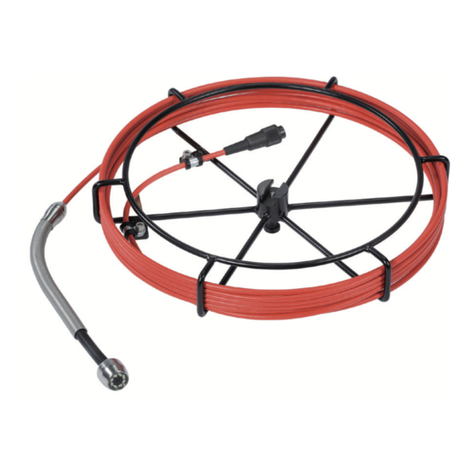
Rothenberger
Rothenberger ROCAM 4 Plus Instructions for use
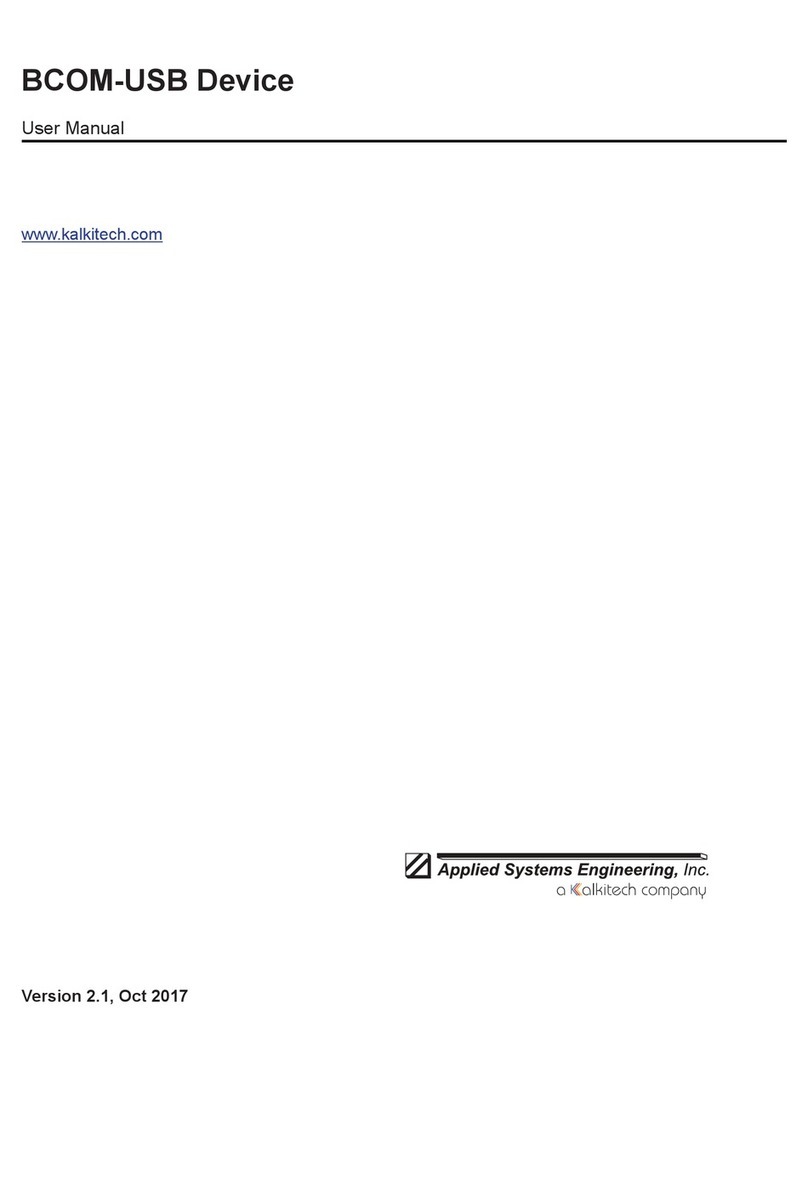
Applied Systems Engineering
Applied Systems Engineering BCOM-USB user manual
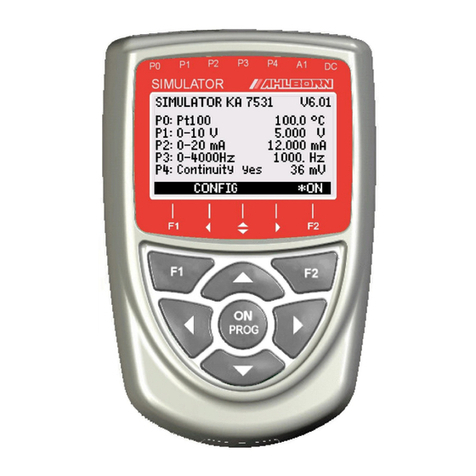
Ahlborn
Ahlborn Almemo KA 7531 operating instructions
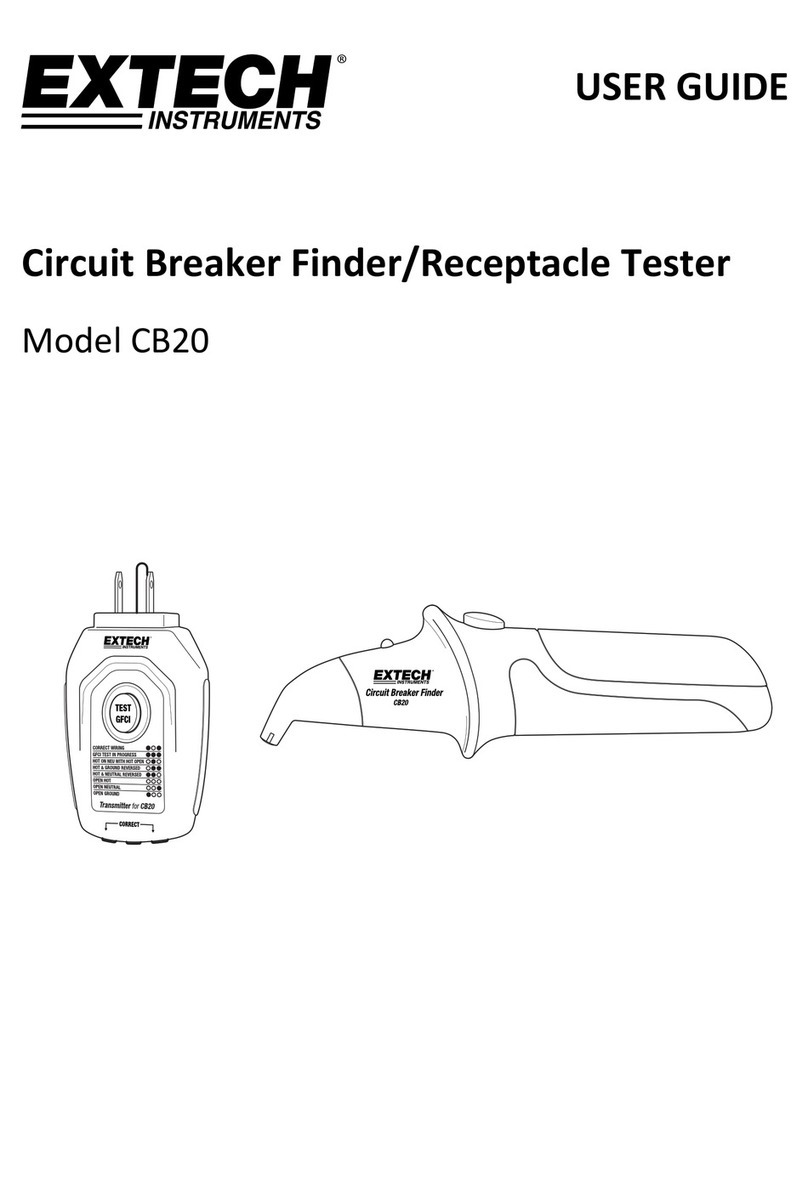
Extech Instruments
Extech Instruments CB20 user guide
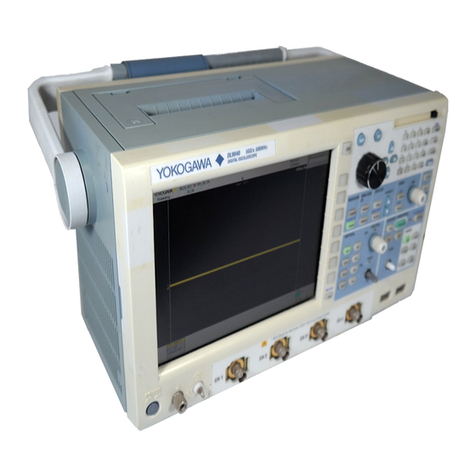
YOKOGAWA
YOKOGAWA DL9040 Series user manual
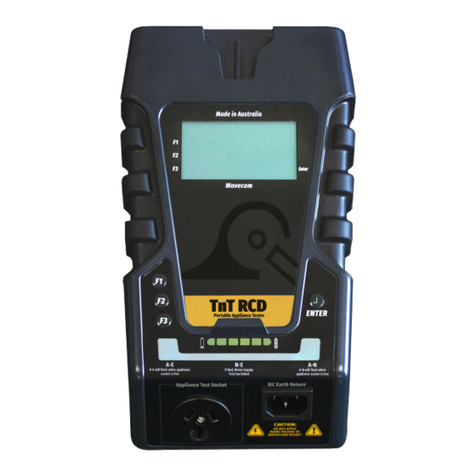
Wavecom
Wavecom TnT RCD user manual



